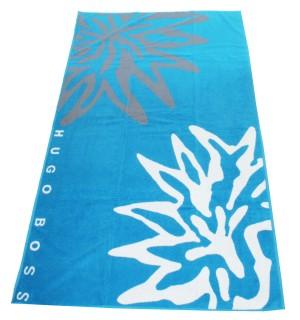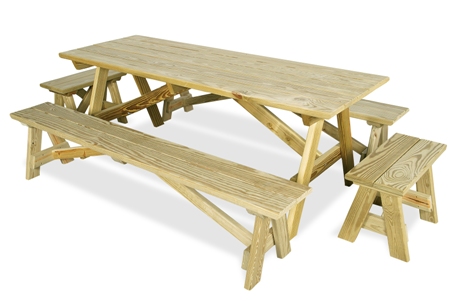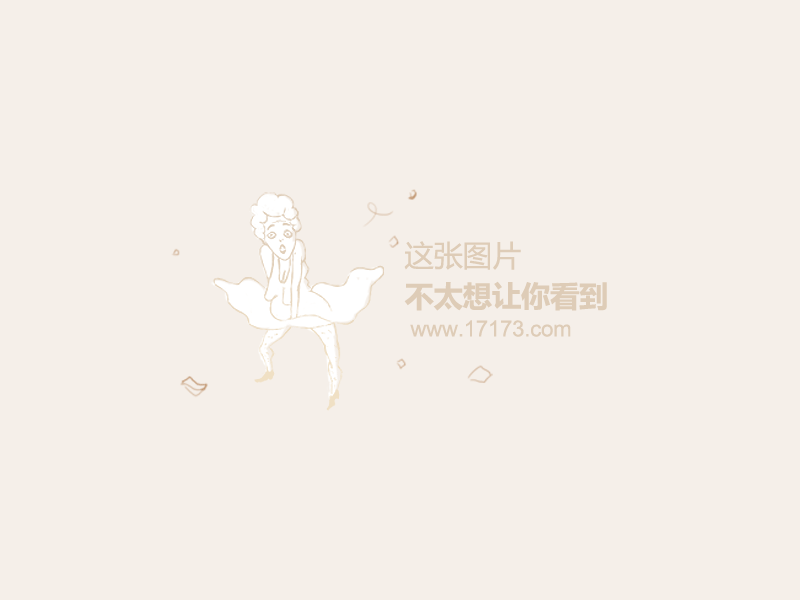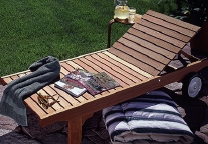
outdoor garden table image

Lepke
We are about to open the new playground in our community, and would like to put some potted plants (preferably flowering) in the picnic table area. Are there any that require no care (since there won't be anyone to water them regularly, so they will just depend on the weather). We are in Zone 6. They can be small (for tabletop) or large (for a larger pot next to the tables). Thanks for your help.
Answer
Portulaca is the best for flowering but needs some sun. Other than that succulents work great in a no-care garden or pots.
How to make a terrarium coffee table?

ll_freeksh
I saw large homemade aquarium tanks filled with nature scenes. I want to customise mine to fit my tuscan decor with fountains and such, but the size of my tank/table would need to be 30" wide x 4' long! So how can I make my own, what materials are needed, and where do I look? Examples, websites, ideas would help me a lot!
Thanks!
Answer
Hope that this might help. I would love to do something like that.
This web link will take you to someone who has done just that. It has several pics.
http://home-and-garden.webshots.com/album/53895023mZuavt
This web site just gives you an idea of how to use terrariums. It's a site where you can buy stuff but I figured it was something you could at least look at.
http://www.african-butterfly-home-decorating.com/glass-table.htm
Here's a step by step on a basic terrarium.
http://www.inhabitat.com/2005/08/23/how-to-make-your-own-terrarium/
Here's more pics of what you are looking for.
http://www.artmakers.com/terrariums/tables/tables.html
. Field of the Invention
This invention relates generally to the design of furniture and more particularly to a table displaying a three-dimensional rendition of a landscape scene, such as a golf course scene, that has been recessed under a transparent table top. The construction of the recess in combination with the glass covering gives the appearance of a bird's eye view of the layout of, say, a hole at a famous golf course.
II. Discussion of the Prior Art
Glass tops on articles of furniture are well-known in the art. The glass can serve as a decorative support or it may form a functional part of a landscape.
Decorative support table tops made of glass come in various geometrical sizes and are supported by a variety of bases. An example of an atypical base is the use of a cyprus knee or root as a base for a pane of glass. Driftwood is also a popular base, as are animal antlers and horns.
A typical ornamental use of glass table tops in landscape scenes are those wherein the glass is intended to depict the surface of water, such as a lake or pond surface. In U.S. Pat. No. 4,594,950 to Morris, there is shown a decorative table in which objects on the surface of the glass appear to emerge from a natural body of water. Animals or waterfowl are constructed so that an upper part of the figure is supported on top of the table top and a lower part is supported on the lower surface of the table top, thus representing the submerged portion of the animal or waterfowl. The two portions can be held together magnetically, allowing them to be moved along the surface. Supports for the glass table top are constructed to depict a natural part of the landscape, such as water lilies or submerged tree trunks. Also, the hue of the glass is varied to more accurately depict the nature of the water found at that particular scene.
Three dimensional terrarium-type landscapes are also known. An example is U.S. Pat. No. 2,196,230 to Randel, which describes an artificial miniature landscape in which trees, shrubs and other objects are formed from natural sponge. The sponge is trimmed to form an artistic assembly in combination with miniature figurines and furniture that extend above the surface of the terrarium.
Turning now to prior art golf course facsimiles, a three dimensional surface which is used as a playing field is disclosed in U.S. Pat. No. 1,591,095 (Meyer). This indoor golf game features a rug-like covering over a rolling "layout" and having a nap, fibers or similar surfacing of different lengths in order to simulate rough, hazards, putting greens and other features of a regulation outdoor golf course. It is fitted into a room or rooms of a building of comparatively confined or limited area but is not embodied as decoration in an item of furniture.
OBJECTS
It is accordingly a principal object of the present invention to provide an article of furniture incorporating an accurately scaled, three-dimensional depiction of a scene.
It is another object to provide an article of furniture having a glass top which serves a display function, permitting viewing of an ornamental but physically accurate scaled model of a famous landscape that has been recessed into the top surface of the furniture.
SUMMARY OF THE INVENTION
The foregoing objects and advantages of the invention are achieved by providing an article of furniture, such as a coffee table or the like, having a box-like recess formed therein where the top surface of the recess is to be covered with a sheet of transparent material. Constructed o the floor of the box-like recess is a scale, three-dimensional model of a particular landscape, such as a famous golf hole scene. The recess is covered by a protective transparent barrier. More particularly, four lateral support walls define the box-like recess and also support a first protective transparent barrier on the upper surface thereof. A second transparent barrier comprising the table top spans the entire length and width of the inset and rests upon support posts that are located at spaced locations around the perimeter of the recess. Thus, two transparent barriers protect the scale model disposed within the recess.
The aforementioned objects and advantages of the invention will become subsequently apparent and reside in the details of construction and operation as more fully hereinafter described and claimed, reference being had to the accompanying drawings forming a part thereof, wherein like numerals refer to like parts throughout.
DESCRIPTION OF THE DRAWINGS
FIG. 1 depicts a perspective view of the preferred embodiment; and
FIG. 2 depicts a cross-section view taken along the line 2--2 in FIG. 1 revealing internal construction of the preferred embodiment.
DESCRIPTION OF THE PREFERRED EMBODIMENT
A preferred embodiment of an item of furniture for displaying a scale model of a scene, such as a hole from a familiar golf course, is shown in the perspective view of FIG. 1 It is envisioned that other famous landscapes such as battle grounds, etc. could be embodied into this recess, but with no limitation intended, the invention will be explained with reference to facsimiles of famous golf courses and holes at such courses. In this drawing, there is depicted a perspective view of a piece of furniture such as a coffee table 10 having a generally square or rectangular perimeter. A heavy pane of glass or plexiglass 12 forms the upper transparent table top surface and is of sufficient thickness, for example, having a thickness of 3/4", to be able to support the weight of objects or persons who may choose to sit or lean thereon. The pane of glass 12 is supported on a series of frictional support pegs 14, preferably of black hard rubber 3/4" in diameter, positioned around the perimeter of an ornamental top surface 16 that surrounds the central core of the table 10. These pegs 14 are mounted on a support strip 18, which may be made from a variety of materials such as wood, faux marble or sheet metal. To prevent the glass 12 from shifting, these pegs 14 are inserted into holes intermittently bored along support strip 18. The size of the holes is adequate to securely retain the 3/4" pegs 14 to a depth of approximately 1/2 inch. A second support strip 20 of the same or a different material is slightly offset from support strip 18 and assists in providing additional depth to the unit. A final facing piece 22 adds additional height and depth around the perimeter of the central display area 24.
FIG. 2 depicts a cross-section view of a portion of the table 10, along the line 2--2 of FIG. 1. It shows the outer heavy glass table top 12 resting on pegs 14. The coffee table further includes a rectangular base 26 which may be fabricated from plywood, chip board or other similar material and which will have a decorative lamination on at least the exterior surface thereof. This base is preferably 3'6" by 3'6" and between 1' to 11/2' high, while the glass top 12 is preferably 5' by 5'. A brace 28 of a triangular cross-section may be screwed and glued to the base 26 around the periphery thereof to provide a support structure to which the four mutually perpendicular side walls 30, 32, 34 and 36 are joined.
The side walls 30 through 36 are also shown as being formed from plywood and include an exterior veneer 38 which may be wood grained, faux marble or metal, depending upon the "look" that one desires.
A bevelled edge is formed between the side walls 30 through 36 and the inwardly extending top support piece 22. A triangular brace or gusset 40 is disposed between these two members to provide a screwed and glued joint. The support strips 18 and 20 have the inner edge thereof cut at a predetermined angle, as does the piece 22, and a facing board 42 is supported on the inclined surface. A brace 44 which is hidden from view is joined to the facing board 42 and to the top support piece 22 as well as to a vertically extending plywood strip 46 which forms the perimeter of the box in which the scene 24 is to be displayed.
Affixed to the braces 44 and forming the horizontal bottom of the display box is a further plywood or chip board sheet 50 which is preferably held in place by screws (not shown) extending through the bottom board 50 and into the perimeter braces 44.
The support strip 18 has a notched and angled edge 52, dimensioned to receive a second pane of transparent material, such as glass panel 54, which extends over the central core 24. In that the heavy glass top 12 shields the lower pane 54, it need not be as thick. For example, a pane of 1/4" glass would suffice for lower pane 54.
Contained within the box-like enclosure defined by the glass pane 54, the bottom board 50 and the mutually perpendicular peripheral walls is the scene to be displayed. As can best be seen in FIG. 1, when depicting a golf hole, it shows the tee, the green, the fairway and other prominent features. In creating the scene, it has been found convenient to take aerial photos and then apply an appropriate scale so that the hole can be made to occupy substantially the entire surface of the bottom board 50. A variety of materials including various plastics, fabrics, minerals, etc. are used in creating a realistic looking scene. For example, sandtraps, water holes, trees and other objects may be included to add to the realism. A support matrix 56, preferably of a material that will retain its shape such as styrofoam, is placed adjacent to the lower surface 50, preferably of 3/4" plywood. It is cut to accurately resemble the contour of the desired landscape, then covered with turf-like fabric 58. Using other known materials, such as sand, glass and commercial replicas manufactured for model railways, virtually any landscape can be accurately replicated to scale.
This invention has been described herein in considerable detail in order to comply with the Patent Statutes and to provide those skilled in the art with the information needed to apply the novel principles and to construct and use such specialized components as are required. However, it is to be understood that the invention can be carried out by specifically different equipment and devices and that various modifications, both as to equipment details and operating procedures, can be accomplished without departing from the scope of the invention itself.
http://www.patentstorm.us/patents/5066078-description.html
Green wonder for your table
A touch of green for the coffee table
A properly made terrarium, in which air and water are continuously recycled, can go for months without care. An untinted jam jar, decanter, brandy snifter and the like can be used for the purpose.
Clear and sterilise the container. then using a funnel, if necessary, put 1ââ to 2ââ layer of mixed pebbles and charcoal chips at the bottom and cover with 1ââ to 3ââ of sterilised potting mixânot too much, just enough to anchor the plant roots.
To plant, dig a small hole, then take a plant from its container, shake off excess soil from the roots. Position and spread roots carefully, cover with a thin layer of soil. Moisten slightly with a sprayer.
Put the terrarium in a bright but not sunny spot. leave it uncovered for a day and then cover it. a little moisture should collect on its walls from time to time, and then drip down as rain.
Using stained glass
Glass terrariums are perhaps the most beautiful combination of stained glass and plants. When planted and landscaped they remind you of elaborate Japanese gardens.
A simple combination of a stained glass container, soil, rocks, charcoal, air, water and plants makes terrariums the easiest and most beautiful way to grow and display plants at home.
Make a terrarium
Glass terrariums look elegant
To make a stained glass terrarium one should have:
A basic knowledge of stained glass.
Some coloured glass
Lots of clear glass (so that the plant can be seen)
Appropriate plants
A truckload of patience!
Design a pattern that you would like crafted out of the glass. Probably copy it from a book or magazine.
Trace the pattern onto the required number of glass plates or panels.
Cut the glass panelsâbig and small, according to the pattern.
The glass panels are now ground and foiled and finally soldered together to create a terrarium or a planter as per your design.
Choose small plants
The terrarium is now ready for planting. Place gravel, soil and charcoal at the bottom. Landscape it with some decorative objects like shells, or a few pearls, corals and the like, and set your plants inside.
Choose small plants or select miniature saplings like those of cacti, asparagus fern, ferns, parlour palm and geraniums. Although cacti would grow best in an open planter, the stunted variety is suited to growth in a terrarium.
Water your plants sparingly. Make sure that the soil should be moist and never soaked or saturated. Place the terrarium in good light but not direct sunlight.
The terrarium or your miniature glasshouse, green with plants is now ready to embellish your living room windowsill, coffee table or even highlight your hitherto conventional garden!
http://www.tribuneindia.com/2001/20010826/spectrum/sunday.htm
Here's a chat forum about terrariums of all kinds.
http://davesgarden.com/forums/t/667850/
Powered by Yahoo! Answers


































